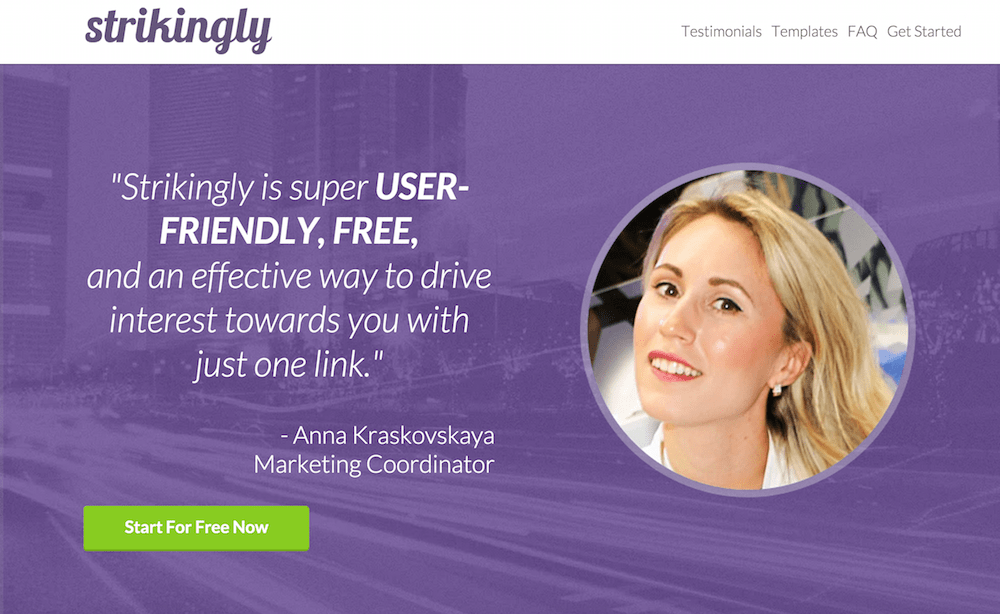

A while back, we talked about why your blog needs an email list. Today, we’re diving head first into how – breaking it down into newbie friendly steps you can implement right away. These steps are so easy that even your grandma could do them (but let’s not give her too many ideas). Okay! Let’s get started.
1. Craft high-value lead magnets.
A lead magnet is something you offer your site visitors in exchange for their email addresses. While many sites give you the simple proposition to subscribe to an email list, far fewer dangle something special at you like a free ebook or coupon code. If you take that lead magnet and enter your email, then you’re subscribed to that email list.
So, what makes the best lead magnets? Value. Your challenge is to figure out what your readers will value. Every audience will be different – some will want a cheat sheet or quick video, others a nice thorough blog or case study.
In the endless unknown, we do know one thing that everyone likes – free stuff. That’s the best way to lead people into your email list. Now here are some examples of killer lead magnets:
- Case Study, ebook, cheat sheeqt
- Coupon or promo Code
- Access to a private Facebook group
- Free trial/consultation
- Contest (for a giveaway)
- Webinar or video series (Q&A, how-to)
- Quiz (with email signup, to see results)
A word of advice: You should devote time into creating something worthy of an email address. In fact, your lead magnet should seem insanely generous, difficult to ignore. Some folks even give away 50 page ebooks, or 20% off promo codes. It can be an investment, but those people who you get on your email list are more likely to engage with, pay for, and advocate your business both now and in the future. Make it worth their while.


“Super Music Recommendations” – courtesy of When Pandas Attack
2. Make the signup flow quick and easy.
Now that you’re comfortable with the idea of a lead magnet, let’s talk about how to present them in the right way. If people are annoyed or inconvenienced by them, they won’t act.
Don’t hate pop-ups.
I never thought I’d say this, but I’m a fan of pop-ups.*
*When they’re done correctly.
The correct way to use a pop-up to your site is to be reasonable with timing. Don’t assault your visitors with a pop-up immediately upon entering your site. Pop-up after five or ten seconds, after they’ve started to like what they see. Or, install an exit intent pop-up that activates when your site visitors shuffle back up the page, proving that they’ve checked out your page due to some level of interest.
Multiply your opt-ins.
Pop-ups shouldn’t be your only list building opt-in. There are people who automatically close pop-ups without reading them. It’s like a reflex. While we do recommend using pop-ups, don’t just rely on them. Here are some of our favorites:
Use your header section. After a several-second delay at the very top of your site, grab readers with a quick one-liner description of your lead magnet.
Try inline opt-ins. That’s a fancy way of saying: write a sentence about your lead magnet add a link to it (for example, download our list of amazing widgets here). When the reader clicks that link, a pop-up will allow them to complete the signup. You can add inline opt-ins anywhere – introduction section, blog, or any other visible section.
Use your footer section. If you’ve managed to get readers all the way to the bottom of your page, that’s a great sign they’ve engaged with your content. Push your lead magnet one more time.
Present well-written, well-placed CTAs.
It’s not enough to simply say what your lead magnet is. You should describe how your lead magnet benefits the reader. For example:
- Download this guide (wrong!)
- (Free) guide: How to gain your first 1000 followers on social media (right!)
The first one only does not really inspire action. But the second one positions the download as a benefit, with clear value, to the reader. How does it do this? Through sound copywriting:
- It offers a qualitative draw (the reader will learn how to do something).
- It gets extremely value-specific (1000 followers on social media).
- It mentions the “free” part, which people love.


“Sign up. We’ll get in touch with you soon” – courtesy of Kitchen Trotter UK
3. Entice people with interactive content.
If your site is stale, static, and hasn’t been updated in months, no one will want to join your email list. And why should they? You probably don’t have anything to offer them, right? Well, maybe you do– but how will they know that just by looking at your staid content?
We have the remedy for you. Actually, it’s four remedies that you can pick and choose from, or use altogether.
Create a blog, and update it regularly.
A simple blog shows your visitors that you’re alive and kicking. If your blog interests your readers, heck yeah, they’ll want to sign up so that they won’t miss a thing.
Include a social feed.
For those of you who don’t have time to regularly update a blog (and even for those of you who do), we’ve already discussed the many virtues of having a social feed on your website. Let people see what’s happening in your offline world, and what you post and engage with on social media, to really feel what you stand for as a brand or individual.


Run quizzes/polls.
A fun way to add interaction to your site is through quizzes or polls. You can use quizzes to help build your email list– for example, ask a series of questions and hold the answer behind an email-gate where, in order to receive their score, the visitor must enter their email address. Or, ask a question of the week related to a hot topic.
4. Speak up on social media!
Many social platforms make it super easy (and free) to market your email list. Try Facebook’s call-to-action tab for your email list, or Twitter’s Lead Generation Cards to encourage followers to sign up.
Think about adding lead magnets in your social media strategy as well. Don’t just say, “Hey, sign up for my email list!” Give them reason to, just like you would on your website.
At the same time, it’s important to avoid excessive self-promotion on social media, one of the biggest branding turn-offs. Follow the 80/20 principle, where you promote your stuff directly only 20% of the time, and focus on other relevant, useful content 80% of the time.
5. Use social proof.
People take solace in positive endorsement from other people. If you have a growing email list, don’t just keep those numbers to yourself– show them off!


And if you’ve had the good fortune of a subscriber who takes the time to tell you how happy they are with your business, ask if you can use their testimonial on your website or lead magnet.
When you show your beaming references – and how many others have signed up – that gives unsubscribed readers psychological incentive to sign up as well. The brain goes, 129 people signed up, so there must be something to it!
6. Segment your target audiences.
A segment is a group of similar people (by demographic, activity, or some other measure). If you attract more than one particular segment of people to your site – which you almost definitely do– then you shouldn’t try to woo everyone with just one lead magnet or call to action. You’ll capture some people, but lose the interest of others. It’s far more effective to “segment” those audiences apart, and tailor your approach to each one.
Let’s say you’re a wedding photographer with two main audience segments: clients who want to book your services, and aspiring photographers who want to learn the trade. These two groups won’t be interested in the exact same material or lead magnet from you. In this case, you should develop two lead magnets – for example, a promo code for clients, and a free cheat sheet for photographers. Advertise these separate lead magnets on different sections of your website, and mix them up on social media.
* Parting Tip: Email Marketing Software
You’ve done it! You’ve made it through the best email list building strategies– easy, right? As for capturing, managing, and sending out emails regularly– there’s a lot of email marketing software out there, but we recommend Mailchimp because it’s so darn easy to use.
What are you waiting for? Whip up a beautiful site, craft your lead magnets, and start building your email list from zero to awesome. Which email-list building strategies work best for you? Let us know in the comments below!
















